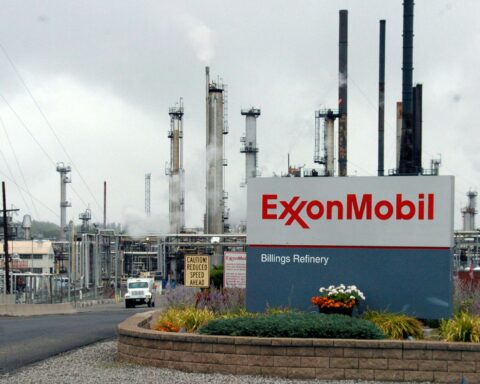As 2021 unfolds, those plans will be at the forefront of our minds, guiding our strategy and operations. The following are a few highlights outlining our emission-reduction plans:
- We plan to reduce Upstream GHG emissions intensity by 15-20% compared to 2016 levels.
- We plan to reduce methane emissions intensity by 40-50% and decrease flaring intensity across our global operations by 35-45% compared to 2016 levels.
These plans cover Scope 1 and 2 emissions from assets operated by the company and are expected to reduce absolute greenhouse gas emissions by an estimated 30% across the company’s Upstream business. We’ve also started providing Scope 3 emissions earlier this month in our Energy & Carbon Summary, which we’ll continue to do on an annual basis.
Our 2025 emission-reduction plans, which were developed as part of our planning and budgeting process, are designed to be credible and tangible. Looking beyond 2025, I am hopeful that our company will be well poised to bring forth new scalable solutions to further mitigate GHG emissions while providing affordable, reliable energy that upholds economies and living standards.
In the short term, the 2025 reduction plans we’ve outlined are projected to be consistent with the trajectories of a 2-degree pathway, a vision articulated in the Paris Agreement that translates to about a 10% reduction in global GHG emissions by 2025 versus 2016 numbers. Solving the dual challenge requires all of us to be in this together, and companies like ours can bring unique strengths and scale that help put societies on a path to a lower-carbon tomorrow.
How are we expecting to achieve these plans?
A significant portion of this reduction will come from our unconventional Upstream production in the U.S., where we are continuing to reduce flaring and methane emissions. To this end, in collaboration with others in the space, we have developed a series of industry-leading best practices, including increasing leak detection and repair, improving inspections with advanced technologies, and retiring high-bleed pneumatic devices (nearly 100% of these devices were phased out from our U.S. unconventional operations as of 2020). We’ve also offered a methane regulatory framework to encourage governments to enact similar requirements across the industry while working with universities to advance research and monitoring networks.
Similarly, our Downstream and Chemical operations will continue to focus on improving energy efficiency, increasing cogeneration at manufacturing facilities, and applying new technologies and techniques that reduce emissions. One example I wrote about recently is the redesigned hydrocracking system we deployed in Rotterdam that won an Edison Award from the R&D Council of New Jersey. In the past few years, my team has developed novel materials, liquid separation membranes, and gas-treating technologies that can achieve significant greenhouse gas reductions. A case in point is Celestia™, a breakthrough catalyst that can help refiners efficiently remove sulfur and other impurities from diesel, an essential fuel for commercial transportation, while using less energy and creating fewer emissions.
Our efforts to reduce emissions in the short term run parallel to our commitment to finding solutions in the long term. Today, our eyes are focused on the technology advancements that will be crucial to achieving society’s net-zero ambitions. These include carbon capture and storage, low-carbon hydrogen production, advanced biofuels and energy-efficient manufacturing. Importantly, these research directions represent technologies that apply to three sectors of energy use (commercial transportation, power generation and industrial manufacturing) that currently have only limited viable solutions for reducing emissions. For instance, CCS, a technology that the IPCC has identified as necessary in every projected 2-degrees pathway, can be deployed at power and industrial facilities. On that note, ExxonMobil has captured more CO2 than any other company since the inception of the technology. And with our ongoing collaborations with companies like Global Thermostat and Fuel Cell, as well as more than 80 universities around the world, we are uniquely positioned to bring this portfolio of technologies to greater scale.
Like I’ve said before, solving the dual challenge will require conviction, ingenuity and, most importantly, collaboration. The plans for 2025 we’ve outlined, coupled with insights from our recent Energy & Carbon Summary, represent our progress and vision. Within the oil and gas sector, we’re working toward industry-leading GHG performance across our businesses by 2030. And as societies continue to deploy renewables like solar and wind, we will support this transition to lower-carbon systems by focusing on technologies that mitigate emissions from the existing energy infrastructure.
I am both enthused and prepared for the work ahead as we approach the next five years.
By Dr. Vijay Swarup, Vice President of Research and Development, ExxonMobil






